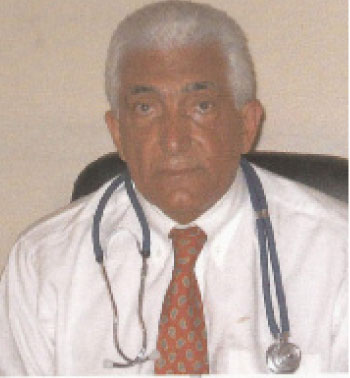
Disability
is extremely diverse. While some health conditions associated with disability
result in poor health and extensive health care needs, others do not. However
all people with disabilities have the same general health care needs as
everyone else, and therefore need access to mainstream health care services.
Article
25 of the UN Convention on the Rights of Persons with Disabilities (CRPD)
reinforces the right of persons with disabilities to attain the highest
standard of health care, without discrimination.
Key
facts
•
Over a billion people, about 15% of the world’s population have some form of
disability, 110 million and 190 million people have significant difficulties in
functioning.
•
Rates of disability are increasing due to population ageing and increases in
chronic health conditions, among other causes.
•
People with disabilities have less access to health care services and therefore
experience unmet health care needs.
In our today’s Health Matters edition, we
continue with Dr Hassan Azadeh, our health adviser who is also a senior
lecturer at the University of The Gambia focusing on people with impairment
(weaken in strength), disabilities and handicap living in a society in a poor health, hopelessness and with
little chance of survival and long life.
What
is definition of disability?
The
most commonly cited definition is that of the World Health Organisation in
1976, which draws a three-fold distinction between impairment, disability and
handicap, defined as follows. ‘
Impairment
is any loss or abnormality of psychological, physiological or anatomical
structure or function; Disability is any restriction or lack (resulting from an
impairment) of ability to perform an activity in the manner or within the range
considered normal for a human being; Handicap is a disadvantage for a given
individual, resulting from an impairment or a disability, that prevents the
fulfilment of a role that is considered normal (depending on age, sex and
social and cultural factors) for that individual.
People
with a disability may include:
•
people who are blind or partially sighted
•
people with learning or intellectual disabilities
•
people who are deaf or hearing impaired
•
people with a physical disability
•
people with long term illnesses
•
people with mental health or psychological difficulties
•
people with an acquired brain injury
According
to the World Health Organisation, a disability is “Any restriction or lack
(resulting from any impairment) of ability to perform an activity in the manner
or within the range considered normal for a human being”
A
disability includes those that:
•
are present, or
•
once existed but don’t any more, for example, a person who has had a back
injury, a heart attack or an episode of mental illness, or
•
may exist in the future, for example, a person with a genetic predisposition to
a disease, such as Huntington’s disease or heart disease or a person who is HIV
positive, or
•
Someone thinks or assumes a person has.
Terminology
“Language
is critical in shaping and reflecting our thoughts, beliefs, feelings and
concepts. Some words by their very nature degrade and diminish people with a
disability”
The
term “disabled young person” tends to convey a message that the only thing
worth mentioning about a person is their disability. It is better to say “young person with a
disability” as this emphasises the person first without denying the reality of
the disability.
Terms
such as cripple, spastic, handicapped, invalid are derogatory, offensive and
you should avoid them.
Sometimes
people with a disability are compared to normal people. This implies that the
person with a disability is abnormal and ignores the fact that everyone has
their own unique identity and abilities. For comparisons you could say other
people instead.
Disability
and health
The
International Classification of Functioning, Disability and Health (ICF)
defines disability as an umbrella term for impairments, activity limitations
and participation restrictions. Disability is the interaction between
individuals with a health condition (e.g. cerebral palsy, Down syndrome and
depression) and personal and environmental factors (e.g. negative attitudes,
inaccessible transportation and public buildings, and limited social supports).
Over
a billion people are estimated to live with some form of disability. This
corresponds to about 15% of the world’s population. Between 110 million (2.2%)
and 190 million (3.8%) people 15 years and older have significant difficulties
in functioning. Furthermore, the rates of disability are increasing in part due
to ageing populations and an increase in chronic health conditions.
Unmet
needs for health care
People
with disabilities report seeking more health care than people without
disabilities and have greater unmet needs. For example, a recent survey of
people with serious mental disorders, showed that between 35% and 50% of people
in developed countries, and between 76% and 85% in developing countries,
received no treatment in the year prior to the study.
Health
promotion and prevention activities seldom target people with disabilities. For
example women with disabilities receive less screening for breast and cervical
cancer than women without disabilities. People with intellectual impairments
and diabetes are less likely to have their weight checked.
How
are the lives of people with disabilities affected?
People
with disabilities are particularly vulnerable to deficiencies in health care
services. Depending on the group and setting, persons with disabilities may
experience greater vulnerability to secondary conditions, co-morbid conditions,
age-related conditions, engaging in health risk behaviours and higher rates of
premature death.
Secondary
conditions occur in addition to (and are related to) a primary health
condition, and are both predictable and therefore preventable. Examples include
pressure ulcers, urinary tract infections, osteoporosis and pain.
Age-related
conditions
The
ageing process for some groups of people with disabilities begins earlier than
usual. For example some people with developmental disabilities show signs of
premature ageing in their 40s and 50s.
Engaging
in health risk behaviours
Some
studies have indicated that people with disabilities have higher rates of risky
behaviours such as smoking, poor diet and physical inactivity.
Higher
rates of premature death
Mortality
(death) rates for people with disabilities vary depending on the health
condition. However an investigation in the United Kingdom found that people
with mental health disorders and intellectual impairments had a lower life
expectancy.
Barriers
to health care
People
with disabilities encounter a range of barriers when they attempt to access
health care including the following.
Affordability
of health services and transportation are two main reasons why people with
disabilities do not receive needed health care in low-income countries - 32-33%
of non-disabled people are unable to afford health care compared to 51-53% of
people with disabilities.
Limited
availability of services
The
lack of appropriate services for people with disabilities is a significant
barrier to health care. For example, research in Uttar Pradesh and Tamil Nadu
states of India found that after the cost, the lack of services in the area was
the second most significant barrier to using health facilities.
Physical
barriers
Uneven
access to buildings (hospitals, health centres), inaccessible medical
equipment, poor signage, narrow doorways, internal steps, inadequate bathroom
facilities, and inaccessible parking areas create barriers to health care
facilities. For example, women with mobility difficulties are often unable to access
breast and cervical cancer screening.
Inadequate
skills and knowledge of health workers
People
with disabilities were more than twice as likely to report finding health care
provider skills inadequate to meet their needs, four times more likely to report
being treated badly and nearly three times more likely to report being denied
care.
Addressing
barriers to health care
Governments
can improve health outcomes for people with disabilities by improving access to
quality, affordable health care services, which make the best use of available
resources. As several factors interact to inhibit access to health care,
reforms in all the interacting components of the health care system are
required.
Assess
existing policies and services, identify priorities to reduce health
inequalities and plan improvements for access and inclusion. Establish health
care standards related to care of persons with disabilities with enforcement
mechanisms.
Human
resources
Integrate
disability education into undergraduate and continuing education for all
health-care professionals. Train community workers so that they can play a role
in preventive health care services. Provide evidence-based guidelines for
assessment and treatment.
Data
and research
In
order to improve access to health services for people with disabilities, WHO:
•
guides and supports Member States to increase awareness of disability issues,
and promotes the inclusion of disability as a component in national health
policies and programmes;
•
facilitates data collection and dissemination of disability-related data and
information;
•
develops normative tools, including guidelines to strengthen health care;
•
builds capacity among health policy-makers and service providers;
• promotes scaling up of CBR;
• Promotes strategies to ensure that people
with disabilities are knowledgeable about their own health conditions and that
health-care personnel support and protect the rights and dignity of persons
with disabilities.
For
further information seek advice from the Ministry of Health and Social
welfare, Also you can email Dr Azadeh azadehhassan@yahoo.co.uk or text only Dr Azadeh on working days between3-6 pm
only on 7774469/3774469



